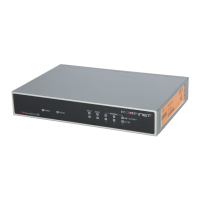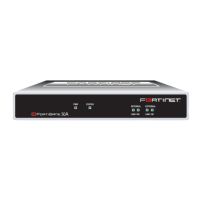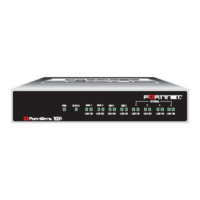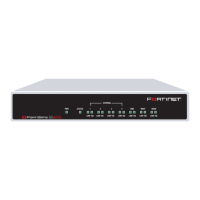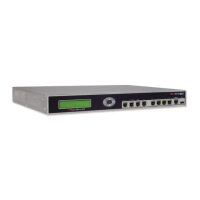FortiGate-50 Installation and Configuration Guide Version 2.50 MR2
FortiGate-50 Installation and Configuration Guide 203
Antivirus protection
Antivirus protection is enabled in firewall policies. When you enable antivirus
protection for a firewall policy, you select a content profile that controls how the
antivirus protection behaves. Content profiles control the type of traffic protected
(HTTP, FTP, IMAP, POP3, SMTP), the type of antivirus protection and the treatment of
fragmented email and oversized files or email.
This chapter describes:
• General configuration steps
• Antivirus scanning
• File blocking
• Blocking oversized files and emails
• Exempting fragmented email from blocking
• Viewing the virus list
General configuration steps
Configuring antivirus protection involves the following general steps.
1 Select antivirus protection options in a new or existing content profile. See “Adding a
content profile” on page 141.
2 Select the Anti-Virus & Web filter option in firewall policies that allow web (HTTP),
FTP, and email (IMAP, POP3, and SMTP) connections through the FortiGate unit.
Select a content profile that provides the antivirus protection options that you want to
apply to a policy. See “Adding a content profile to a policy” on page 142.
3 Configure antivirus protection settings to control how the FortiGate unit applies
antivirus protection to the web, FTP, and email traffic allowed by policies. See:
• “Antivirus scanning” on page 204,
• “File blocking” on page 205,
• “Blocking oversized files and emails” on page 206,
• “Exempting fragmented email from blocking” on page 206.
4 Configure the messages that users receive when the FortiGate unit blocks or deletes
an infected file. See “Customizing replacement messages” on page 108.
5 Configure the FortiGate unit to send an alert email when it blocks or deletes an
infected file. See “Configuring alert email” in the Logging and Message Reference
Guide.
Note: To receive virus log messages, see “Configuring logging”, and for information about log
message content and format, see “Virus log messages” in the Logging Configuration and
Reference Guide
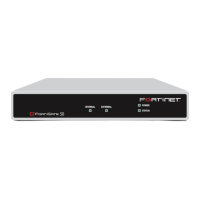
